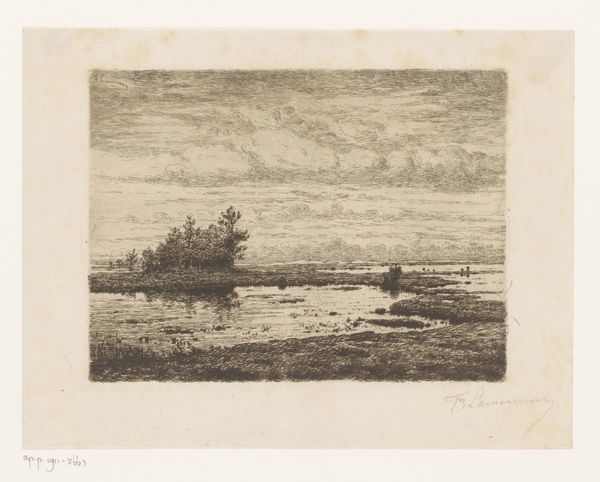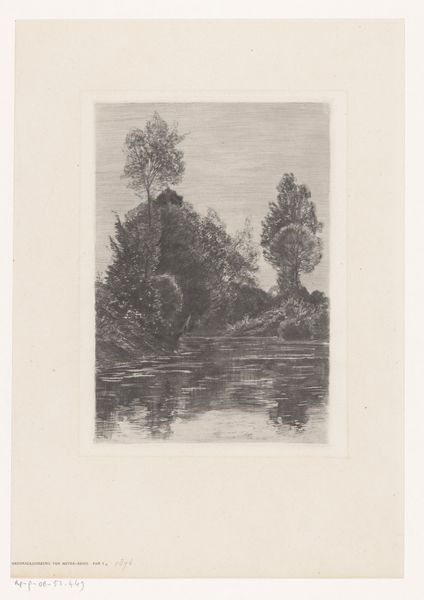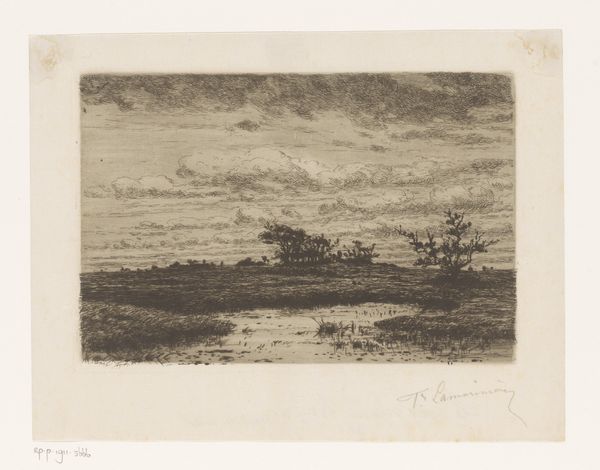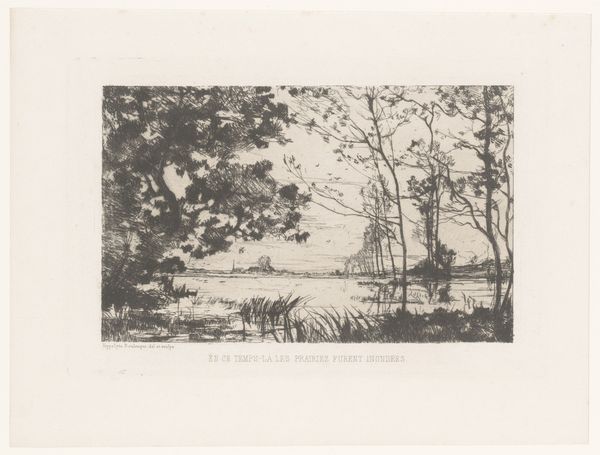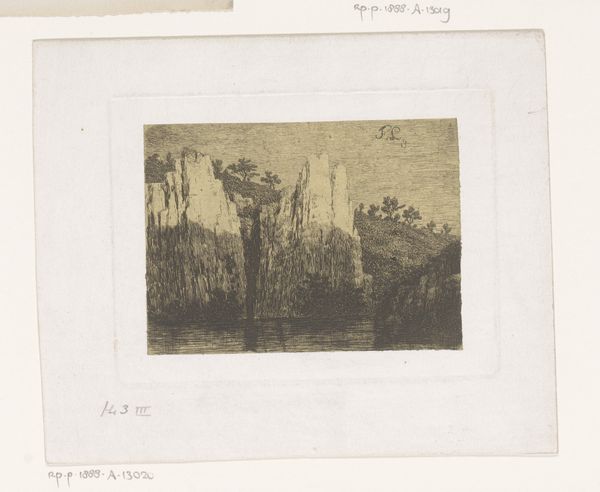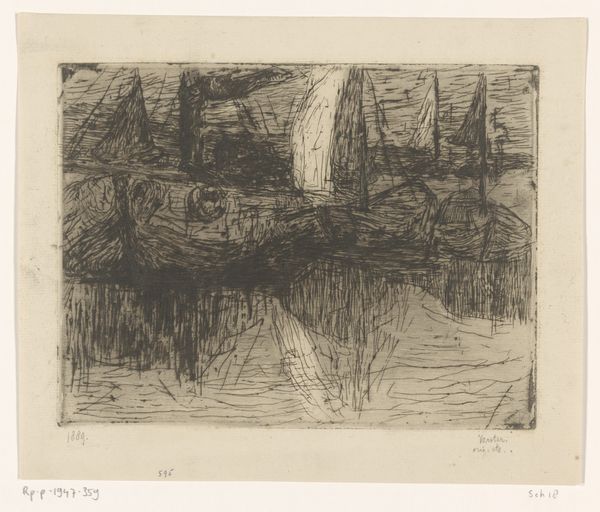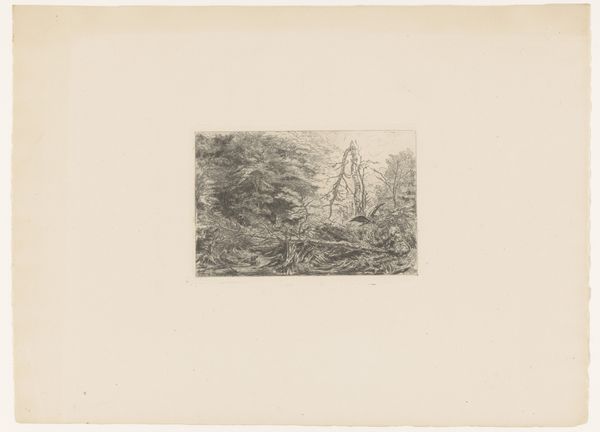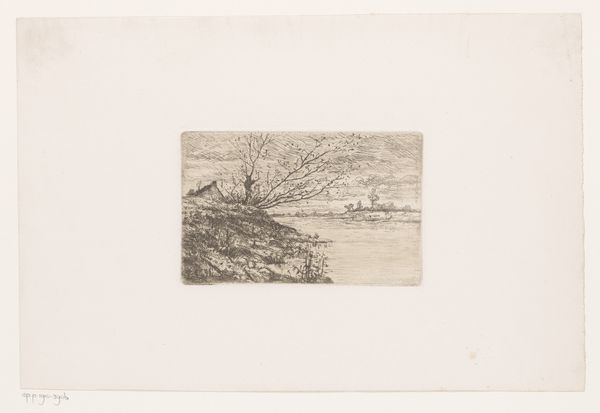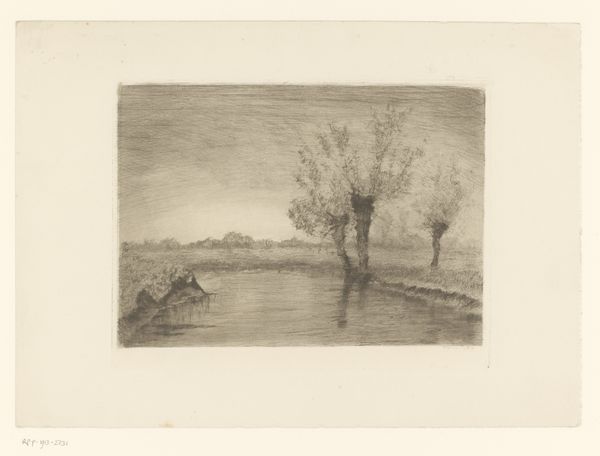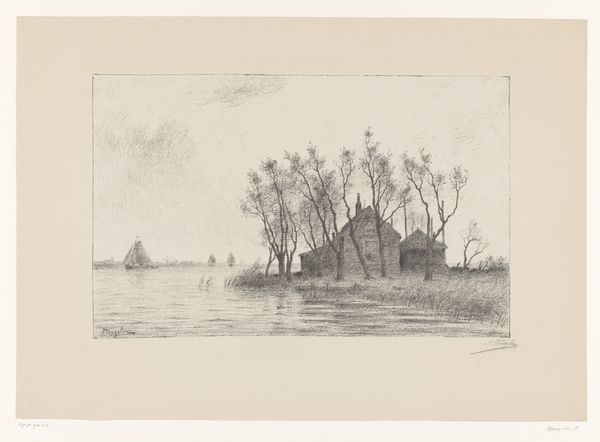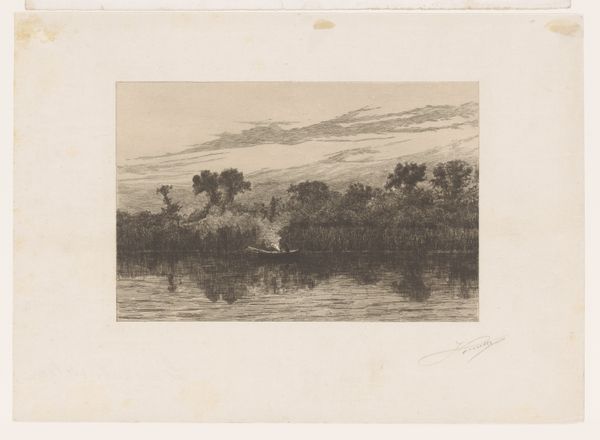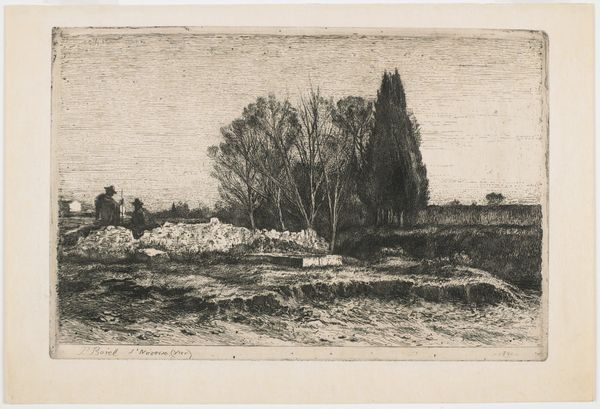
print, etching
# print
#
etching
#
landscape
#
realism
Dimensions: height 82 mm, width 111 mm
Copyright: Rijks Museum: Open Domain
Editor: Here we have "Rotswand aan de oever van de Maas" – or "Rocky wall on the banks of the Meuse" – an etching by Jean Pierre François Lamorinière, dating from 1838 to 1888. It feels so meticulously rendered, almost photographic in its detail. What do you see in this piece from a formalist perspective? Curator: Indeed. Note the stark contrasts Lamorinière establishes through the careful manipulation of light and shadow. Observe how the verticality of the rock formations is accentuated by the dense, parallel lines of the etching technique. The texture, built up layer by layer, isn't simply mimetic. Instead, it directs our eye. How do you feel that texture contributes to the overall effect of the piece? Editor: I guess it emphasizes the roughness and solidity of the rocks, making them feel almost tangible, while the reflections in the water are so much smoother, contrasting that texture. Does the composition, this division between rough and smooth, contribute to a broader narrative? Curator: Narrative isn't the point here. Focus instead on the semiotic relationships at play. The smooth, horizontal expanse of water is only there to emphasize the jagged verticality of the cliffs. What if he'd etched rolling hills instead? By focusing on these formal elements and their relation to each other, can you deduce any greater purpose for Lamoriniere’s selection of these materials? Editor: So, less about what the image depicts and more about how those forms interact to create a visual experience. It's about lines, light and texture as primary actors. The emphasis on contrast really strikes me now as essential. Curator: Precisely! By dissecting these elements and seeing them in relation, we understand not only Lamorinière's skill but also how artistic meaning is generated by structure alone. Editor: I appreciate how looking at it this way takes it beyond a simple landscape and really elevates the experience of viewing the piece. Curator: Agreed, shifting our gaze toward these basic compositional techniques unlocks new possibilities in experiencing art.
Comments
No comments
Be the first to comment and join the conversation on the ultimate creative platform.

